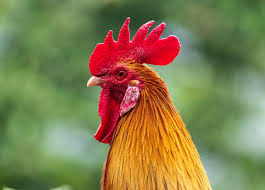Diclazuril
Name:
Diclazuril
Common Capacity:
- Suspension: 500ml/bottle, 1000ml/bottle
- Water Soluble Powder: 1kg/bag, 5kg/bag, 10kg/bag
Common Concentration:
- Suspension: 0.5%, 1%, 2.5%
- Water Soluble Powder: 0.2%, 0.5%, 5%
Applicable Animals:
Diclazuril is a highly effective, low-toxicity new-generation anticoccidial drug. It primarily exerts its anticoccidial effect by interfering with the developmental cycle of coccidia, particularly the development of merozoites and gametocytes in the small intestine and cecum, thus effectively killing coccidia. It shows broad-spectrum anticoccidial activity against various Eimeria species and is suitable for the prevention and treatment of coccidiosis in poultry (especially chickens).
Applicable Animals in Global Animal Husbandry:
- Poultry (Chickens, Turkeys, Ducks, Geese, etc.): Primarily used for the prevention and treatment of small intestinal and cecal coccidiosis caused by Eimeria species, such as Eimeria tenella, Eimeria acervulina, Eimeria maxima, Eimeria necatrix, Eimeria brunetti, Eimeria mitis, etc. It effectively controls the occurrence and development of coccidiosis, reduces oocyst shedding in feces, lowers the risk of re-infection, and improves feed conversion rate and growth performance.
- Rabbits: Also used in some regions for the prevention and treatment of coccidiosis in rabbits.
- Other Coccidia-Sensitive Animals: Theoretically, it can also be used for other coccidia infections in animals sensitive to Diclazuril, but specific application requires veterinary guidance.
Usage and Dosage:
The usage and dosage of Diclazuril vary depending on the dosage form and animal species. Strict adherence to veterinary guidance or product instructions is essential.
Suspension (Mostly for drinking water administration):
- Poultry (Drinking water administration):
- Add 1 mg of active ingredient per liter of drinking water, for 2 consecutive days.
- Example for 0.5% Diclazuril Suspension: Add 2 ml of this product per liter of drinking water (i.e., 10 mg of Diclazuril per liter of water).
Water Soluble Powder (Mostly for mixed feed or drinking water administration):
- Poultry (Mixed with feed):
- For prevention and treatment of chicken coccidiosis: Add 1 mg of active ingredient per ton of feed, for 7 or more consecutive days.
- Example for 0.2% Diclazuril Water Soluble Powder: Add 1 kg of this product per ton of feed.
- Poultry (Drinking water administration):
- Based on the content of active ingredient, calculate the required amount, dissolve in drinking water, and allow poultry to drink freely for 2 consecutive days.
Dosage by Growth Stage:
- Chicks/Broilers: Coccidiosis is common in young chickens; preventive medication should be administered early. It can be used throughout the growing period or in stages from day-old to market age to establish stable immunity and control infection.
- Pullets/Laying Hens: Preventive medication, especially during periods prone to coccidiosis outbreaks such as transfer or stress.
Applicable Diseases and Symptoms:
Diclazuril is primarily used for the prevention and treatment of avian coccidiosis (Eimeriosis).
- Poultry Coccidiosis:
- Symptoms: Depression, loss of appetite, ruffled feathers, bloody or carrot-like feces, stunted growth, emaciation, anemia, increased mortality.
- Lesions: Hemorrhage, swelling, and necrosis of the small intestinal or cecal mucosa; intestinal contents appear reddish-brown or blood-clotted.
- Main Pathogens: Eimeria tenella (cecal coccidiosis), Eimeria acervulina, Eimeria maxima, Eimeria necatrix, Eimeria brunetti, Eimeria mitis (small intestinal coccidiosis).
Precautions:
- Withdrawal Period: Poultry 7 days.
- Usage and Dosage: Strictly use as per recommended dosage. Do not arbitrarily increase the dose, as this may lead to toxicity or promote drug resistance.
- Prolonged Use: Diclazuril belongs to the triazine class of anticoccidial drugs. Continuous prolonged use may lead to the development of drug resistance in coccidia. It is recommended to rotate with other types of anticoccidials, or combine with coccidiosis vaccines or traditional Chinese medicine to slow down the development of resistance.
- Uniform Mixing: When mixing with feed, ensure the drug is uniformly distributed to avoid localized high or low concentrations.
- Dissolution: Water soluble powders must be fully dissolved to avoid clogging the drinking water system and ensure animals receive the full dose.
- Storage: Store in a cool, dark, and tightly sealed place.
Contraindications:
- Contraindicated in animals with a known hypersensitivity to Diclazuril or its components.
- Not for use in laying hens during egg production, to avoid affecting egg quality and drug residues.
Post-Administration Care:
- Observe Efficacy: Closely monitor the improvement of clinical symptoms in animals after administration, such as feed intake, mental state, and fecal condition, to assess the treatment effect.
- Environmental Disinfection: Coccidial oocysts are highly resistant to the external environment. During and after treatment, strengthen cleaning, disinfection, and hygiene management of the rearing environment, especially fecal disposal, to reduce environmental infection pressure.
- Provide Nutritional Support: Sick animals may have impaired digestion and absorption. Provide highly nutritious, easily digestible feed and ample drinking water to promote recovery.
- Monitor Resistance: Periodically perform coccidia isolation and sensitivity tests on the farm to monitor changes in Diclazuril resistance, guiding future medication choices.
- Biosecurity Management: Strictly implement biosecurity measures, such as limiting access for personnel and vehicles, regular disinfection, and isolating sick animals, to control the spread of coccidiosis from its source.
Applicable Animals
Animal species suitable for this veterinary medication

